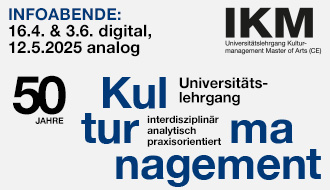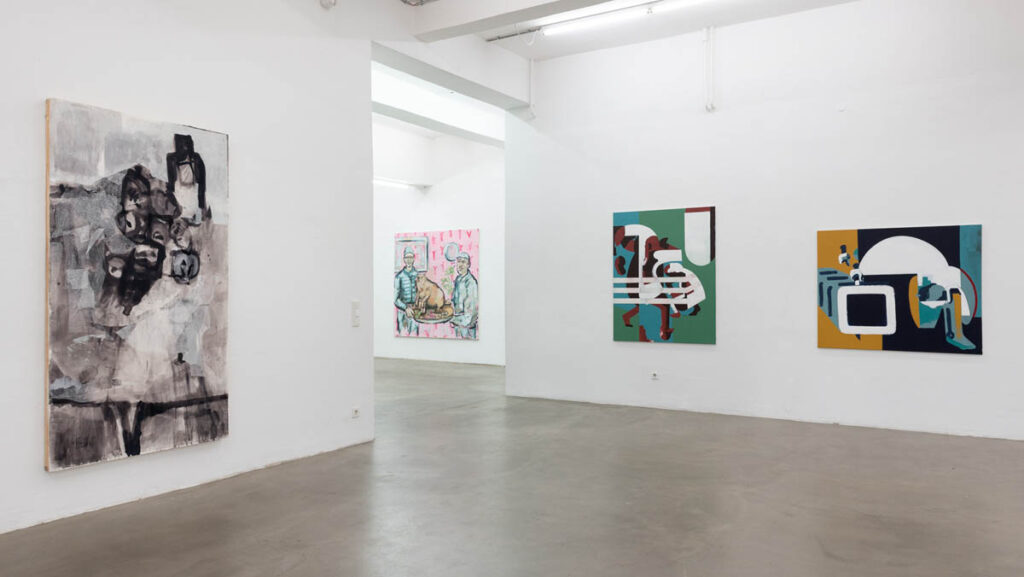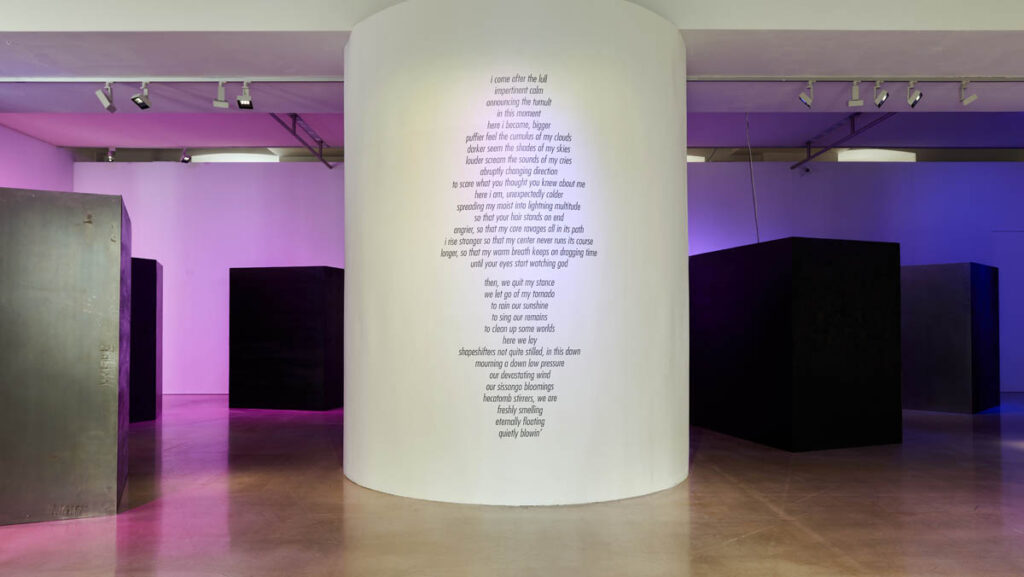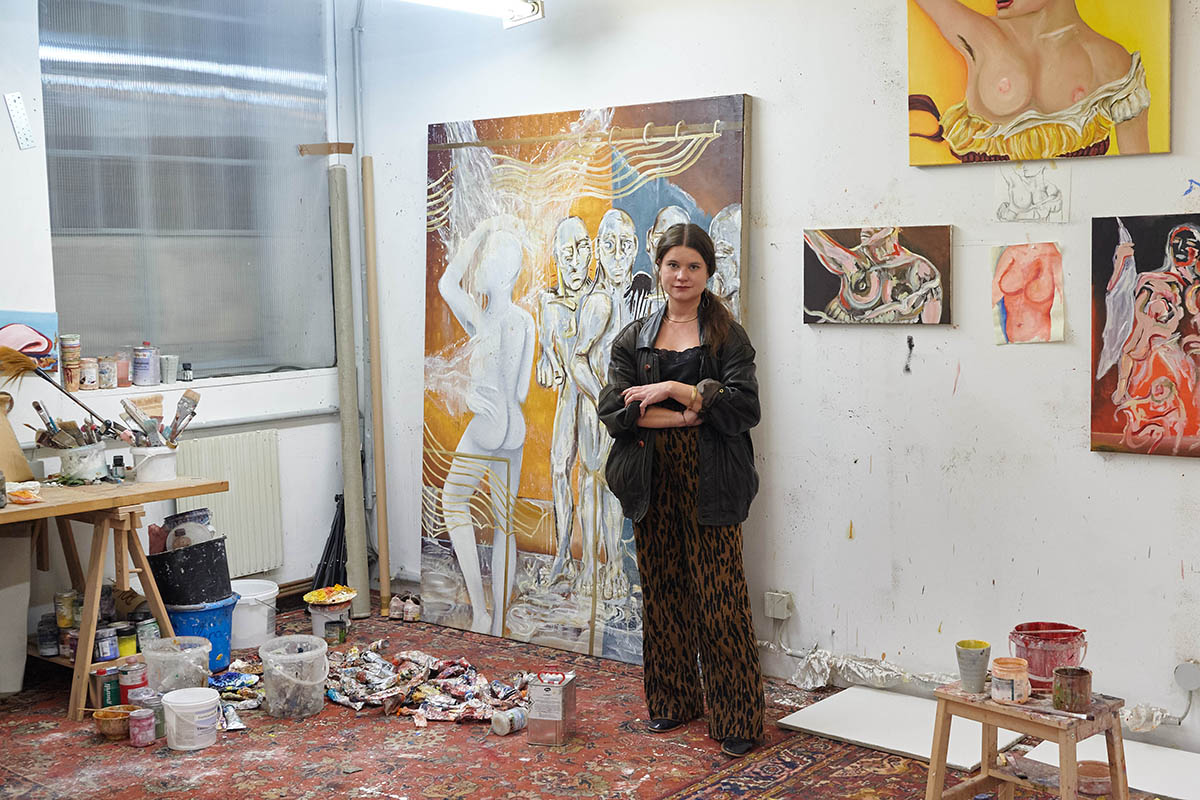
In your childhood, you were also in contact with art through your family.
Well, I have a very funny memory. I went a lot to art museums, and once when I was with my mother and father at the Venice Biennale, when I was four or five, In the Russian Pavilion, there was a floor installation with sand or small rocks making the picture. The installation was secured with the stanchions. They were higher than me. I used the opportunity and rolled in under them. I walked through the full installation. Everyone was in shock, and security came as well. That is the first thing I remember about art.
How did the idea of studying art develop? How was the decision made?
In my teenage years, I was curious about how to live through art, and I was painting and drawing, but I was not sure if I wanted to study art. My first exhibition abroad in 2012, was Oradour Sur Glane, in Centre De La Mémoire, Hôtel De Ville, Oradour Sure Glane, France. I was the first German artist to exhibit there after World War II. Speaking with the last refugee and feeling how touched he was, that was a point where I said I made it professionally.
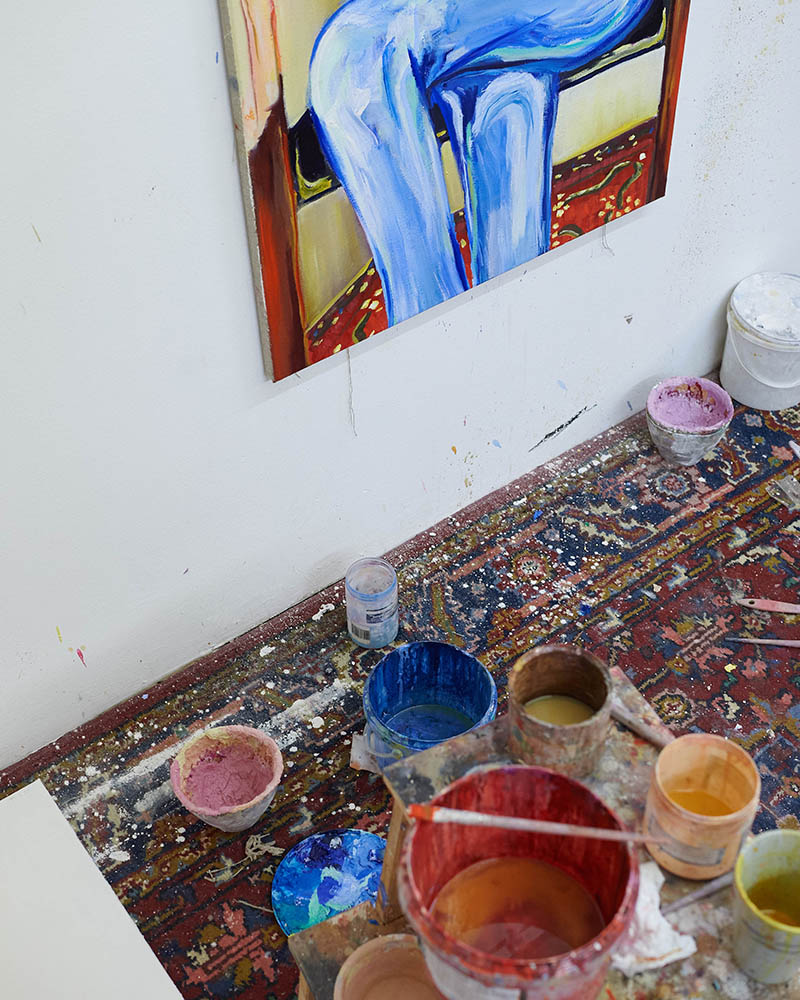
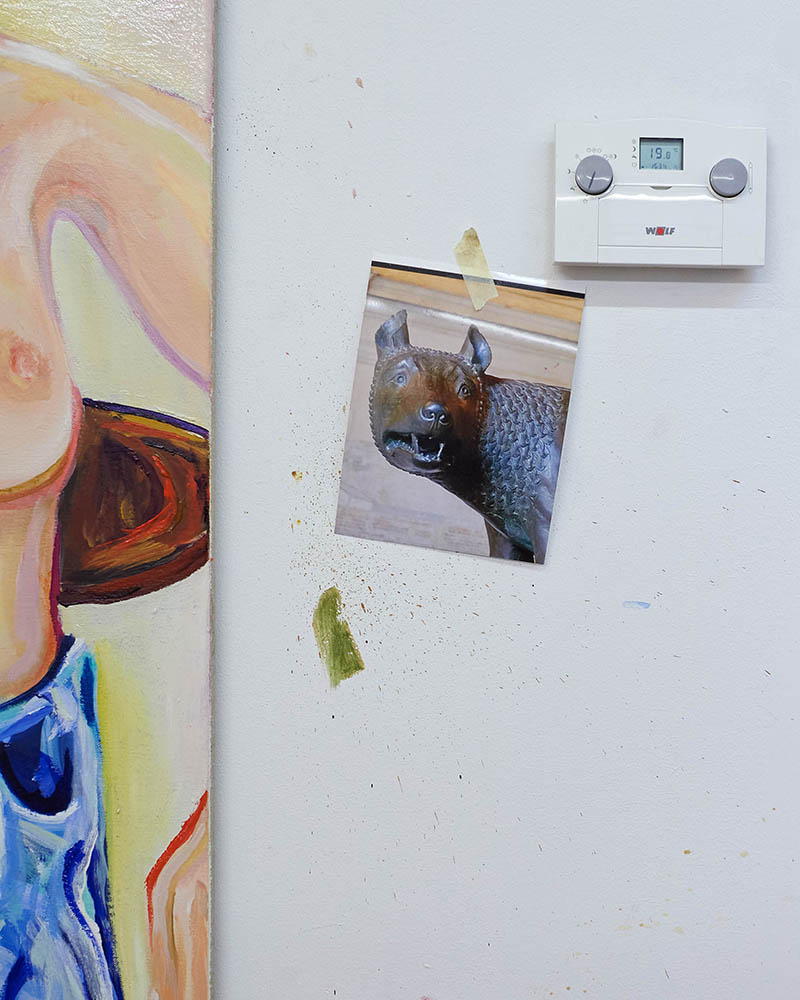
You came to live in Vienna for the first time in 2018, and now you have moved for good? Tell us about the process and how that happened.
During my studies at the Academy of Fine Arts in Dresden, I didn’t think I would do Erasmus because I was working with huge formats and I didn’t know how I would move, and that practical part was a bit challenging, but in my third year, I came to Vienna to Daniel’s Richter class as an Erasmus student. I stayed for the whole summer after my Erasmus. I also made a big group exhibition with 50 positions with my colleagues here in Vienna called Prospektive in Semperdepot. And then later, I also did it in Dresden with the same concept; we did it in one small window of time without lockdown in Dresden 2020; we were the only exhibitions open in the whole city at that moment. During that time, I was naturally coming to Vienna very often. I stayed in close contact with my friends and colleagues in Vienna. When I finished my diploma in Dresden, I got a lot of recommendations to go to Berlin, Leipzig, or Cologne to continue with my master’s studies. The best decision I ever made was to move back to Vienna completely. I got the atelier in the 3rd district quite easily, and I enjoy life here.
Where do you find your breaking point for learning new things and developing your work? How important are exhibitions to you?
Exhibitions are not a breaking point in my process or growth. I am in the process of working on my paintings, and I am alone in the studio, which is the most important part of the work for me. That is the heart of everything. I am almost every day in the studio; I forbid myself to be there every day, so I have one day free every week without coming. My routine on days I am in the studio is that the first thing I would do in the morning would be jogging; it is like a meditation for me. After I go through emails and organization, I normally play for one hour on the piano. Music is for me a little bit like painting; you have colors as tones, and I can see them sometimes. I love romantic piano compositions, so I often play Liszt or Chopin. This is my time to feel free because nobody hears me. It is my time to make mistakes and enjoy them. Music is slowing me down and making me stable. Then I go to the studio and work there till the evening, sometimes even until the night.
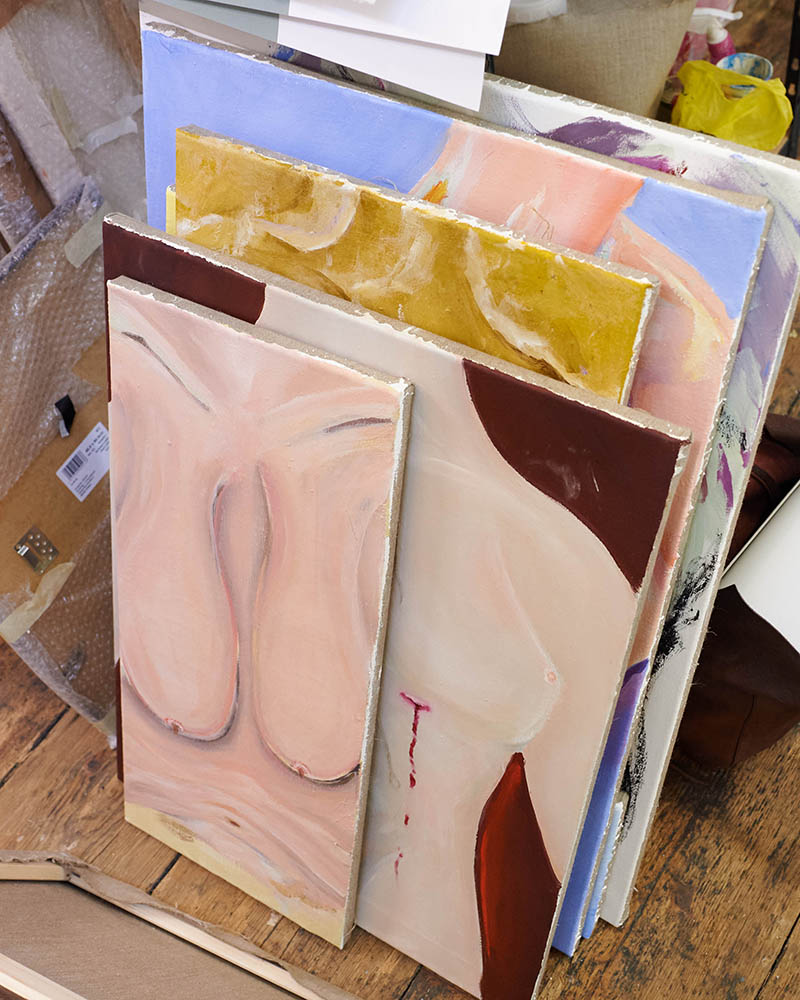
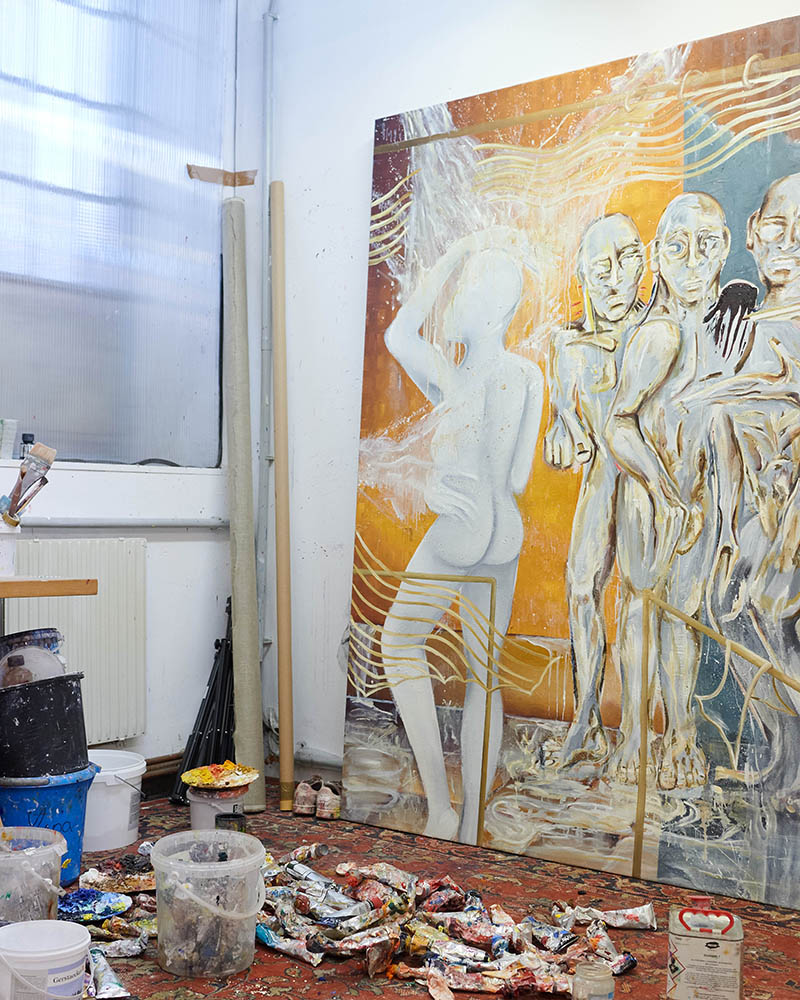
Explain a little bit about your working process, how the idea is developing, and how you know the work is finished.
I am very intuitive with my work; I have a general idea of what I want to paint, but how I am painting it is always open. As Duchamp said, “If I know before what the work will look like in the end, I don’t have to paint it.” That is how new things develop in my work; I am always having a dialogue between me and the work. I am always concentrating on seeing and not thinking but listening to and reacting to what the work is giving me. I am focused on the needs of the work. It is also about the dynamics; for example, in my painting “Golden Shower,” all the sparkles and drops of water were made through the action of the turpentine and paint initiated with my movements on the canvas. It is always between creating and destroying at the same time. The moment when a painting is almost finished, I slow down, and then I think about the consequences, and I feel it always depends on whether I should begin with it over again or finish it.
How have the years of studying art affected your process now?
In the art university, we are going through training, and you are every day in your atelier, and of course, you are getting better over the years. That opens us up to really experiment and be critical about our own work. This is how I trained myself to feel to catch the moment when the painting is finished. I am not going back to paintings I have already finished. But in the process, I am always facing phases that are ups and downs, and sometimes I have a long phase of down in the painting. During my studies, I would set aside paintings and continue working on them later. For years, I completed every painting I started. It could change throughout the process, but it was always finished.
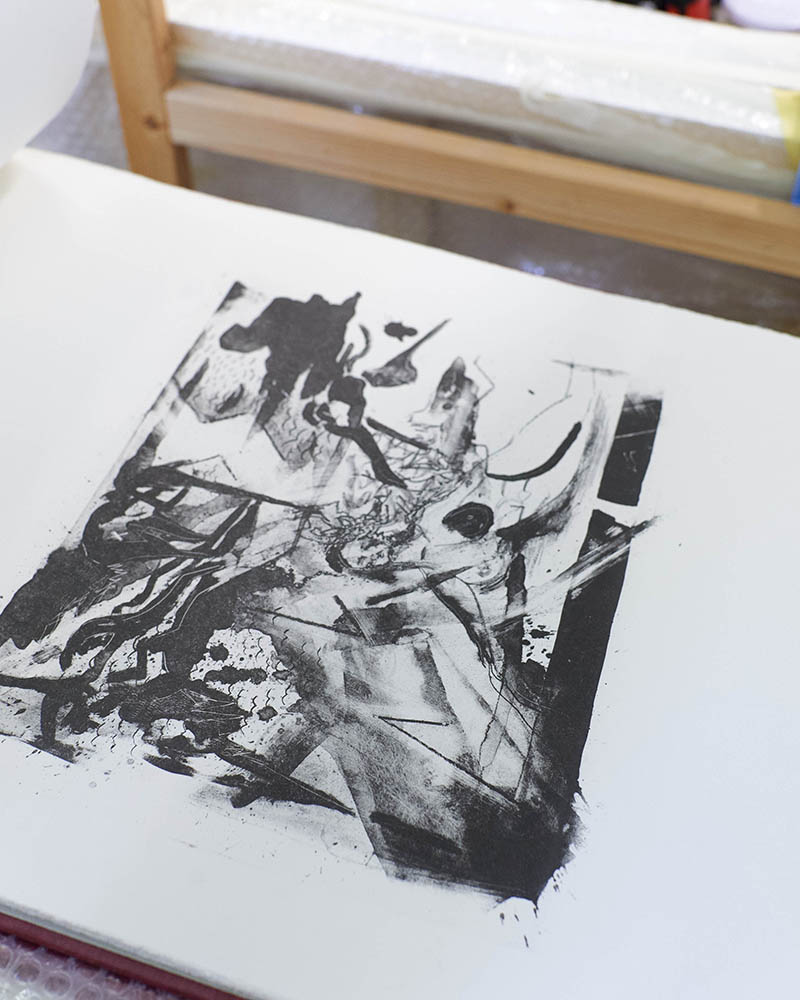
It is always interesting to hear about the painter’s relationship with drawing.
I feel drawings are as important as paintings. In a painting, you have many moments in one picture, but if we take diary drawings as an example, you also have a portraiture of the moment, for sure. The only difference is the factor of time. For example, you can see in Beuys’s drawings that it is him. I think this signature aspect of the drawing is very important. For me, the processes are similar.
You are no longer living in your country of origin; how do you make yourself feel at home?
I am a very free person, and for me, leaving my birth city was good because I wanted to be surrounded by a more developed cultural scene and a bigger city. For me, the question of where I feel at home is easy to answer. I have a feeling I am at home in Vienna, especially because of my friends. But generally, I am free, and I feel that wherever I have my sketchbook and can work, it is my home. Funny enough, every year on my birthday, I am somehow in Paris.
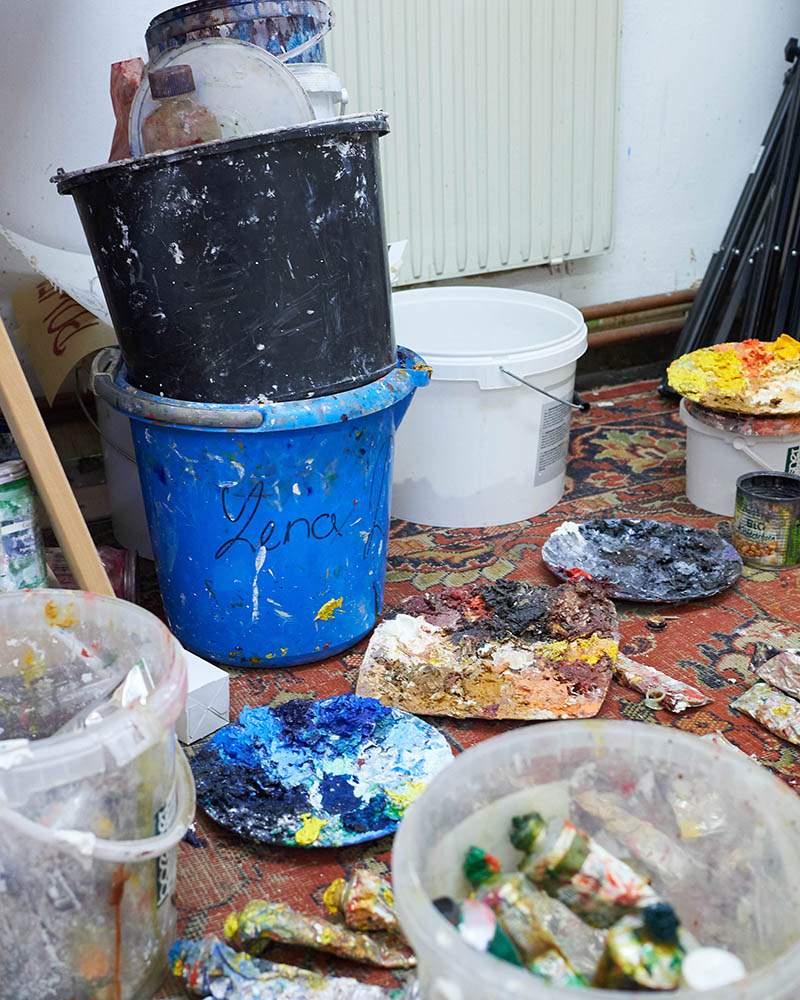
What are you reading now?
I just finished Second Sex by Simone de Beauvoir, and it made sense to read it next to the work on my current series of paintings. But I am not trying to quote any theory in my work. I am making my opinions on stuff I read, but I am not feeling myself as a catalyst for other people’s ideas. I am using reading as an exploration, and when I paint, I am in my own world and making my own decisions and thoughts. For me, the most important thing is that my art is authentic, and I want to paint something I know about. It has to do a lot with feelings. I am very honest with my paintings.
Portraiture and figurativeness: who are the humans in your paintings?
They are all my friends; the people I portray are almost always my friends whom I know well. For me, it is more important to portray the whole energy, presence, and emotion that are coming from the person than the physical aspects. And I am always challenged to make it in two-dimensional space. When I try to work with models I don’t know, I miss the tension and magic. People who are in my painting often know about it and can recognize themselves.
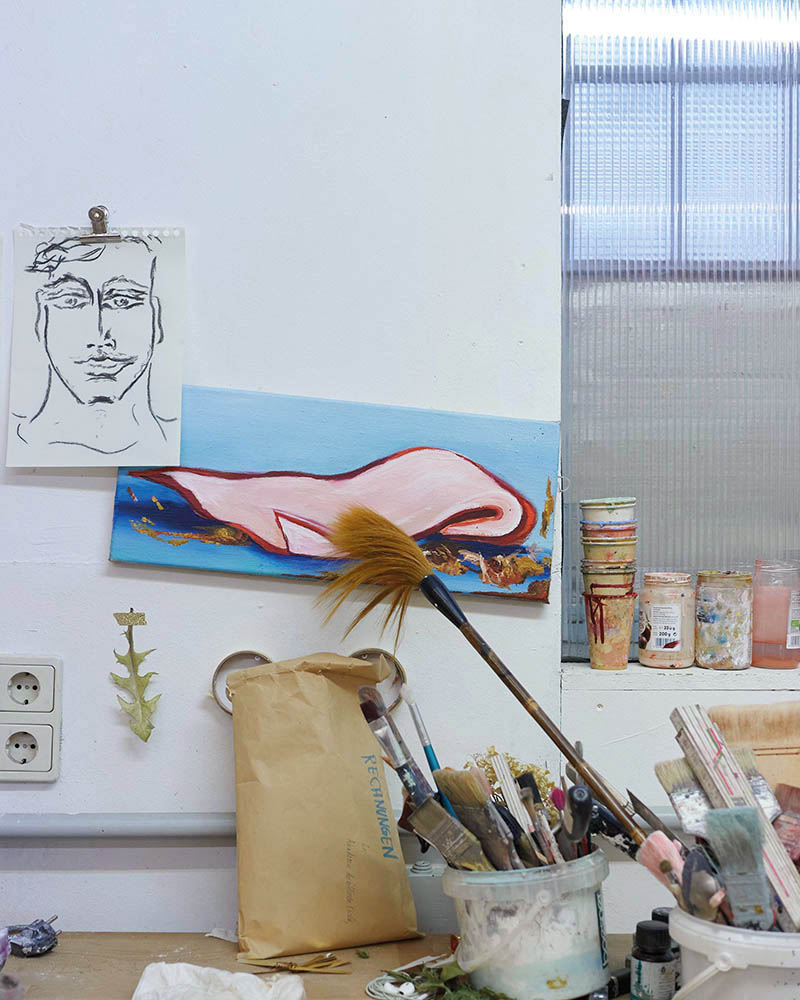
How are you relating the notions of public and intimate in your work?
I am a public person. My feelings are becoming public through my work; I don’t have to speak about them, but you can see them on the canvas. Sometimes I have a problem selling some of my work. Because they resemble my deepest feelings and processes connected to loss, sadness, and overcoming. Sometimes it feels so wrong to sell feelings to other people; it is a strange thing I am overcoming or trying to overcome.
How are the historical aspects influencing you?
I see next to other pictures a picture of French Revolution: Liberty Leading the People by Eugene Delacroix hanging next to your work in progress. It is not only about the painting of the body parts; I also see paintings of women’s breasts as a question of history and a political problem that we are still facing. And about the censorship that we are still having, I really want to see what happens in relation to my works and the works from the past next to them. I am having manifestational thoughts, as Freud is saying, so I paint revolution, but there is also my subconscious working in the back the whole time.
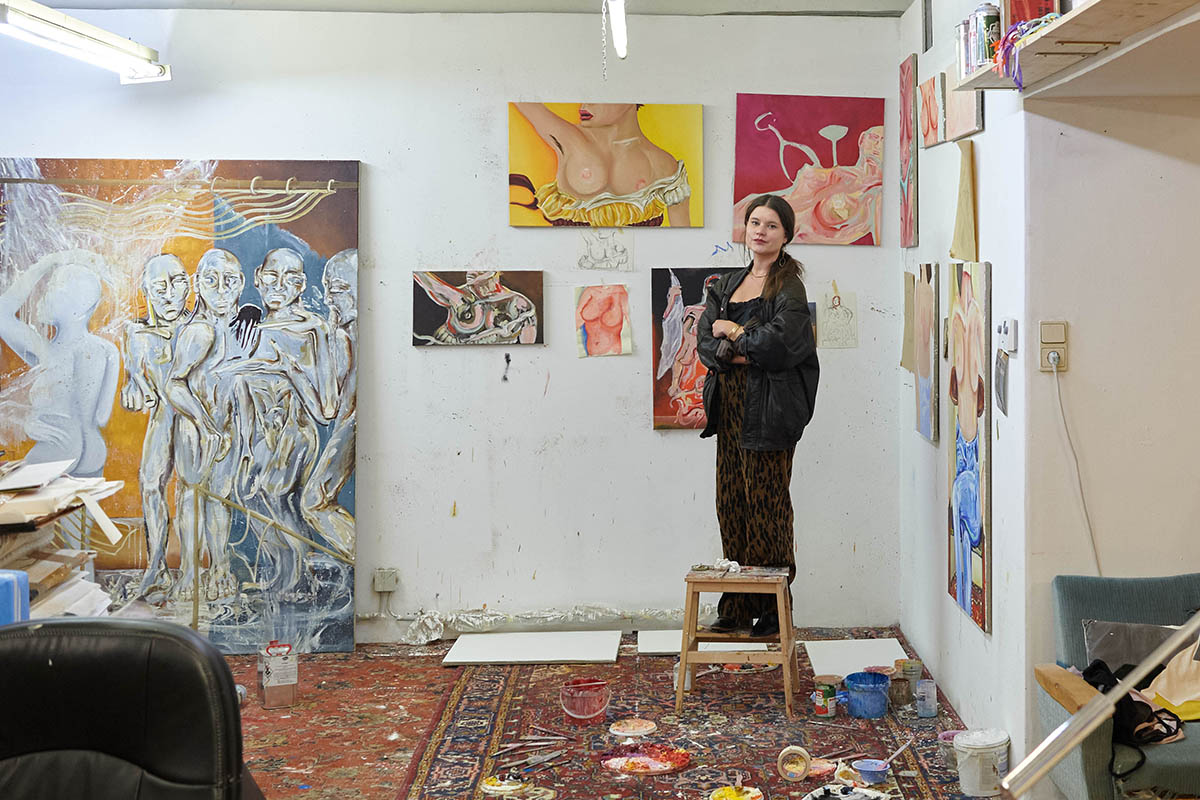
What is your next step?
Next, I want to paint a triptych. This is a feeling I have and an idea. I don’t know how it will look, but I want it to be a triptych.
Where can we see your works in the following months?
Group Exhibition „Cliffhanger Epilog: Anfang“ at Künstlerhaus Dortmund, Germany, from 14.10. to 26.11.2023, and a solo exhibition „Tittie Show“ at Verein Fortuna in Vienna, Austria, opening on 02.11. to 11.11.2023.
Lena Dobner – www.lenadobner.com, www.instagram.com/cinquantefrancs/



